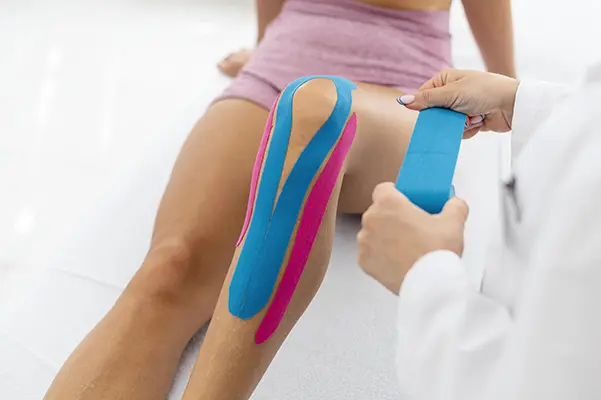Kinesiotaping
What is it? What are its benefits?
Kinesiotaping is an innovative therapeutic method used in the treatment of muscular, tendinous, ligamentous, and circulatory conditions. It involves the application of specially designed elastic adhesive tapes that stimulate the skin and underlying tissues.

Mechanism of Action
Applying kinesiotape promotes the activation of venous and lymphatic microcirculation. By using the skin as a sensory vector, this technique stimulates mechanoreceptors and nociceptors, thereby helping to modulate pain and support the body’s natural tissue healing processes.
The primary goal is to reduce tissue repair time, allowing for faster recovery and, in some cases, the continuation of physical activity without interruption.
Fields of Application
Kinesiotape can be used in a wide range of contexts, from pediatrics to geriatrics, provided there are no contraindications (e.g., fragile skin, skin infections, allergies).
It is also widely used in sports physiotherapy, both for prevention and post-injury support.
Depending on the taping technique used, the therapeutic effects may include:
- Reduction of swelling and bruising
- Muscle stimulation or inhibition
- Pain relief
- Functional joint stabilization
Therapeutic Goals
One of the main advantages of kinesiotaping is that it extends the benefits of a physiotherapy session, with effects lasting between 3 to 5 days. It helps to:
- Relieve pain
- Reduce swelling
- Promote natural tissue healing

